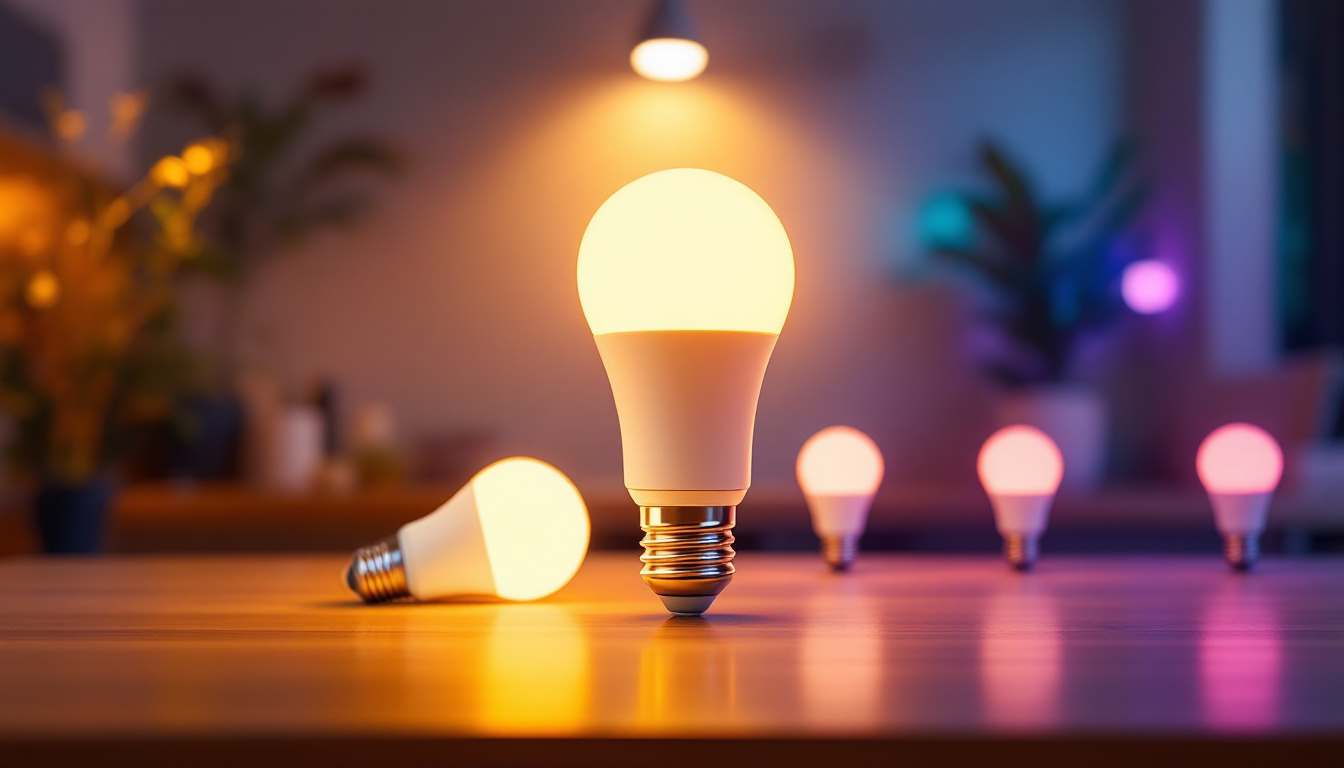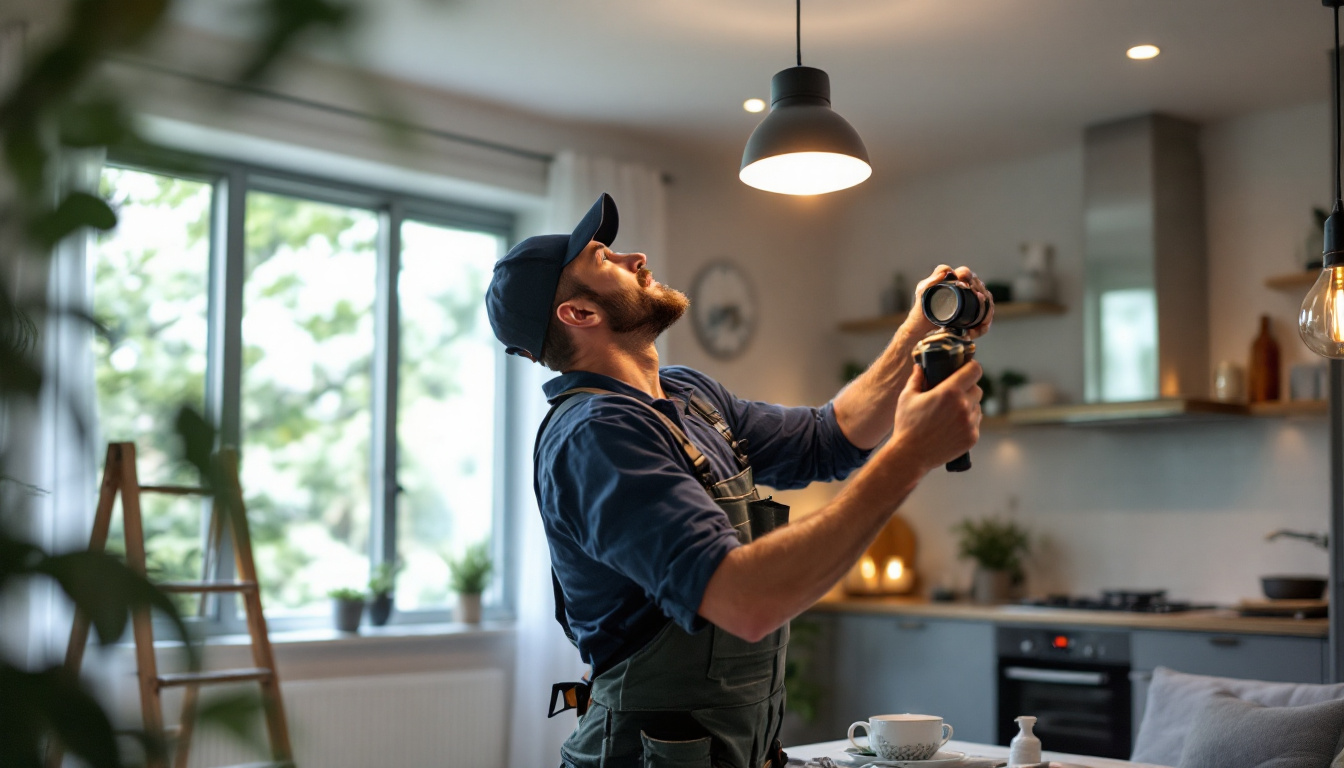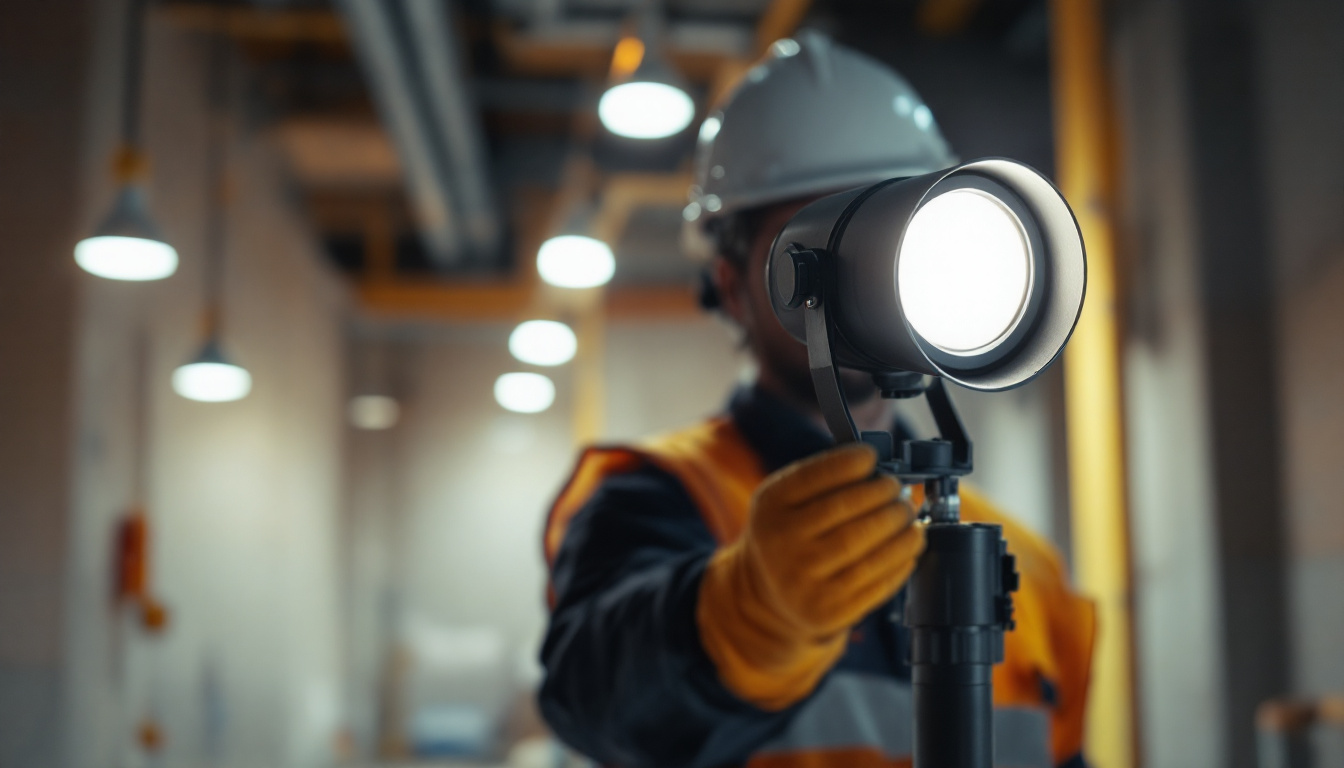
In the ever-evolving world of outdoor lighting, LED floodlights have emerged as a game-changer for lighting contractors. These fixtures not only enhance the aesthetic appeal of outdoor spaces but also provide significant energy savings and longevity. As contractors navigate the complexities of choosing the right lighting solutions, understanding the advantages and applications of LED outdoor floodlights becomes crucial. This article aims to simplify the selection process and provide insights that can help lighting contractors make informed decisions.
LED, or Light Emitting Diode, technology has transformed the lighting industry. Unlike traditional incandescent or halogen bulbs, LEDs use a semiconductor to convert electricity into light. This fundamental difference in operation leads to numerous benefits, making LEDs the preferred choice for outdoor floodlighting.
One of the most compelling advantages of LED floodlights is their energy efficiency. LEDs consume significantly less power compared to traditional lighting options. For lighting contractors, this means reduced energy costs for clients and a lower environmental impact. The ability to provide high lumen output while consuming minimal wattage is a key selling point when discussing options with customers. Moreover, the reduced energy consumption not only translates to lower electricity bills but also contributes to a decrease in greenhouse gas emissions, aligning with global sustainability goals. As more businesses and homeowners become environmentally conscious, the demand for energy-efficient solutions like LED floodlights continues to rise.
LED floodlights boast an impressive lifespan, often exceeding 25,000 hours of use. This longevity translates to fewer replacements and maintenance calls, which is a significant advantage for contractors. Additionally, LEDs are more durable than traditional bulbs, as they are less susceptible to breakage and can withstand harsh weather conditions. This reliability is particularly important in outdoor settings where exposure to the elements is a constant concern. Furthermore, many LED floodlights are designed with advanced thermal management systems that help dissipate heat, further extending their lifespan and maintaining optimal performance. This resilience makes them ideal for applications ranging from residential gardens to large-scale commercial properties, ensuring consistent illumination without the frequent interruptions associated with traditional lighting solutions.
LED floodlights are versatile fixtures that can be used in a variety of outdoor applications. Understanding these applications can help lighting contractors recommend the most suitable solutions for their clients’ needs.
In commercial and industrial environments, LED floodlights are often utilized for security and safety purposes. They provide bright illumination for parking lots, loading docks, and building perimeters, enhancing visibility and deterring potential intruders. Contractors can emphasize the importance of well-lit areas in preventing accidents and improving overall safety. Additionally, these floodlights can be equipped with motion sensors, allowing for energy savings while ensuring that areas are illuminated only when needed. This feature not only reduces electricity costs but also extends the lifespan of the fixtures, making them a cost-effective choice for businesses.
For residential projects, LED floodlights can enhance outdoor living spaces, gardens, and pathways. They create inviting atmospheres for evening gatherings and improve visibility for homeowners. By showcasing the aesthetic benefits alongside practical applications, contractors can help clients envision how LED floodlights can transform their outdoor environments. Furthermore, the availability of various color temperatures allows homeowners to customize the ambiance of their outdoor areas, whether they prefer a warm, cozy glow for family barbecues or a cooler, brighter light for safety along walkways. The integration of smart technology also enables homeowners to control their lighting remotely, adding convenience and modernity to their outdoor spaces.
Architects and landscape designers often incorporate LED floodlights to highlight architectural features or illuminate specific landscape elements. These fixtures can be strategically placed to accentuate textures, colors, and shapes, adding depth and dimension to outdoor spaces. Lighting contractors can collaborate with designers to ensure that the lighting complements the overall vision of the project. In addition to enhancing aesthetics, LED floodlights can also be used to create focal points in gardens or along pathways, guiding visitors through the space while showcasing the beauty of plants and structures at night. The use of adjustable beam angles allows for greater flexibility in design, enabling the lighting to adapt to various elements and achieve the desired effect, whether it be subtle or dramatic.
Selecting the appropriate LED floodlight involves several considerations. Lighting contractors must evaluate the specific needs of each project to recommend the best solutions for their clients.
When choosing LED floodlights, understanding wattage and lumen output is essential. While LEDs consume fewer watts, they can still produce high lumen outputs. Contractors should be prepared to explain how to match the lumen output to the intended application, whether it’s for security, ambiance, or highlighting features. Providing clients with clear comparisons can help them make informed choices.
Color temperature plays a significant role in the atmosphere created by outdoor lighting. Measured in Kelvin (K), color temperature can range from warm (2700K) to cool (6500K). Lighting contractors should consider the desired effect when recommending floodlights. For example, warm white light can create a cozy environment for residential areas, while cooler temperatures may be more suitable for commercial applications.
The beam angle of an LED floodlight determines how concentrated or dispersed the light will be. A narrow beam angle is ideal for highlighting specific features, while a wider angle can illuminate larger areas. Contractors should assess the layout of the project and recommend floodlights with appropriate beam angles to achieve optimal lighting effects.
Proper installation is critical to maximizing the performance of LED floodlights. Lighting contractors should be aware of various factors that can impact installation and ensure that they adhere to best practices.
LED floodlights come with various mounting options, including wall mounts, pole mounts, and ground mounts. Contractors must evaluate the site conditions to determine the most suitable mounting method. For instance, pole-mounted floodlights may be ideal for parking lots, while wall-mounted fixtures can enhance building facades.
Understanding the electrical requirements of LED floodlights is essential for safe and efficient installation. Contractors should ensure that the wiring is compatible with the floodlights being installed and that all electrical codes and regulations are followed. This attention to detail can prevent future issues and ensure the longevity of the lighting system.
Integrating control systems can enhance the functionality of LED floodlights. Options such as timers, motion sensors, and dimmers allow for greater control over lighting levels and can improve energy efficiency. Contractors should discuss these options with clients to determine the best solutions for their specific needs.
While LED floodlights are known for their longevity and durability, regular maintenance can help ensure optimal performance. Lighting contractors should educate clients on basic maintenance practices and troubleshooting techniques.
Regular inspections of LED floodlights can help identify potential issues before they become significant problems. Contractors should recommend checking for dirt and debris accumulation, as this can affect light output. Cleaning the fixtures periodically can help maintain their efficiency and brightness.
Contractors should be prepared to address common issues that may arise with LED floodlights. This includes flickering lights, which can indicate a problem with the power supply or connections. Educating clients on how to identify these issues can empower them to seek assistance promptly, ensuring that their outdoor lighting remains functional.
When discussing LED floodlights with clients, cost is often a significant factor. Lighting contractors must be equipped to explain the initial investment versus long-term savings associated with LED technology.
While the upfront cost of LED floodlights may be higher than traditional options, contractors should emphasize the long-term benefits. The energy savings, reduced maintenance costs, and extended lifespan of LEDs can lead to substantial savings over time. Providing clients with a cost-benefit analysis can help justify the initial investment.
Many regions offer incentives or rebates for energy-efficient lighting upgrades. Contractors should stay informed about available programs and share this information with clients. This can help offset the initial costs and encourage clients to make the switch to LED technology.
The lighting industry is continually evolving, and staying ahead of trends can provide contractors with a competitive edge. Understanding emerging technologies and design approaches can enhance service offerings.
Smart lighting technology is becoming increasingly popular in outdoor applications. Contractors should explore options that allow for remote control and automation of LED floodlights. This can enhance convenience for clients and contribute to energy savings. As smart home technology continues to gain traction, integrating these solutions into outdoor lighting can be a valuable selling point.
As sustainability becomes a priority for many consumers, environmentally friendly lighting solutions are gaining attention. Contractors should be aware of products that use recyclable materials or have low environmental impact. Promoting these options can resonate with eco-conscious clients and set contractors apart in a competitive market.
LED outdoor floodlights offer numerous advantages that can simplify the work of lighting contractors. By understanding the technology, applications, and installation considerations, contractors can provide valuable insights to their clients. As the industry continues to evolve, staying informed about trends and innovations will ensure that contractors remain competitive and can meet the diverse needs of their clients. Ultimately, embracing LED technology not only enhances outdoor spaces but also contributes to a more sustainable future.
Ready to elevate your lighting projects with the efficiency and sustainability of LED outdoor floodlights? At LumenWholesale, we’re committed to providing you with the highest quality, spec-grade lighting products at unbeatable wholesale prices. Say goodbye to inflated markups and hello to a vast selection of reliable, high-performance lighting that meets the most rigorous industry standards. Take advantage of our hassle-free bulk buying and enjoy free shipping on your orders. Don’t compromise on quality or value—choose LumenWholesale for the perfect blend of affordability and convenience. Explore our wholesale lighting options now and secure the best value for your next project.

Discover the science behind LED motion sensor flood lights and learn how they revolutionize outdoor illumination for lighting contractors.

Discover the ultimate guide to 4′ LED bulbs, exploring their benefits, energy efficiency, installation tips, and how they can transform your lighting experience.

Discover the latest trends shaping the lighting industry in “7Bled: Trends Every Lighting Contractor Should Know.” From innovative technologies to sustainable practices, this guide equips contractors with essential insights to stay ahead in a rapidly evolving market..

Discover how the innovative Bi-Directional Cylinder Light can give lighting contractors a competitive edge in securing more bids.